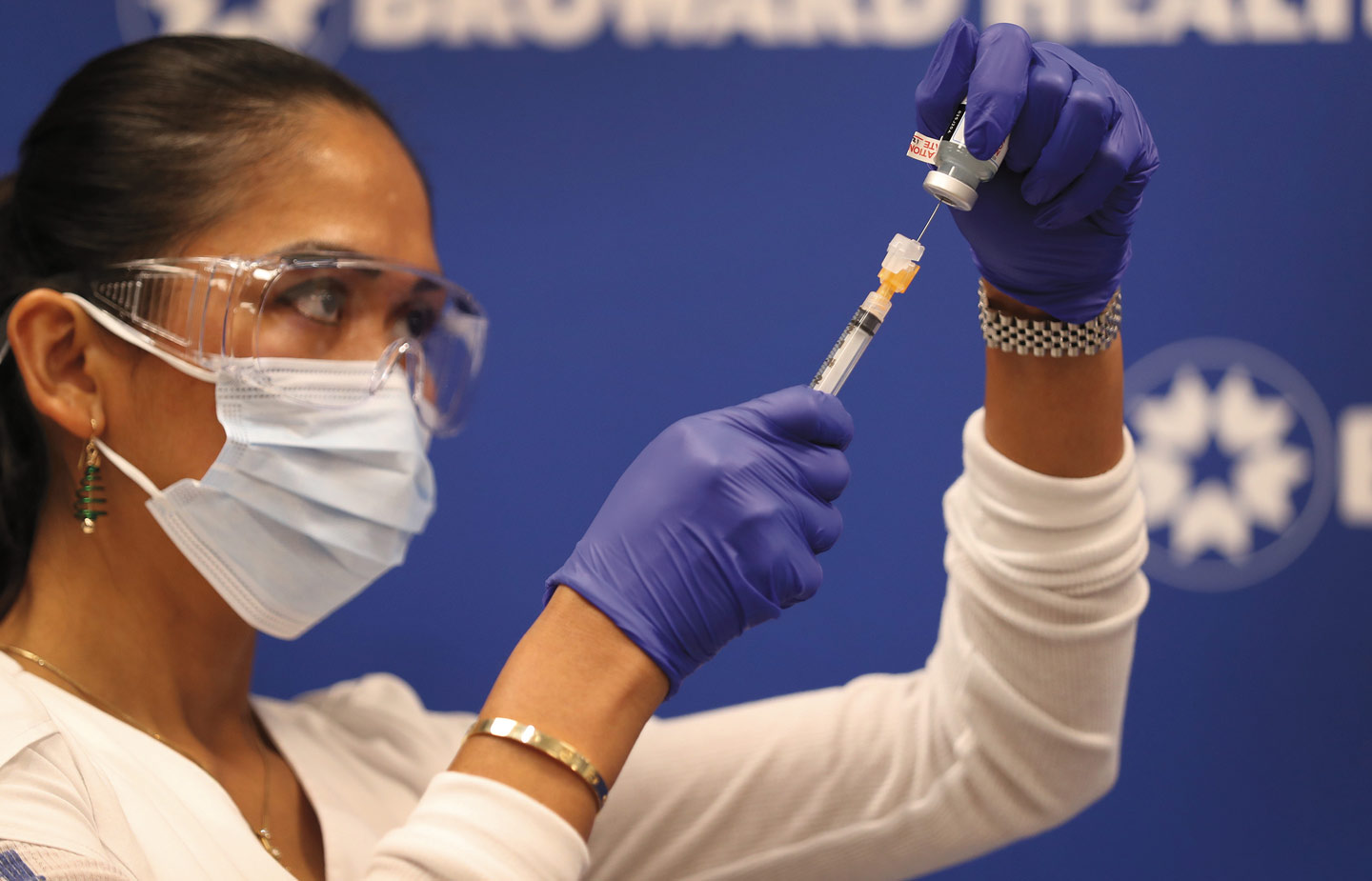The Messenger
Kristen Park Hopson ’01 says mRNA is ushering in a new age of drug discovery and development.
Moderna’s COVID-19 vaccine was designed in just two days.
Chinese scientists published the genetic sequence of the novel coronavirus on Jan. 11, 2020, and by Jan. 13—more than a week before the first COVID case was documented in the United States—researchers at Moderna and the National Institutes of Health had finalized the sequence for mRNA-1273, the official name of the company’s vaccine.
By late February, when Professors Martha Grossel and E. Carla Parker-Athill led two dozen of their first-year biology students past Moderna’s sleek headquarters in Cambridge, Mass., the first batches of the vaccine had already been sent to NIH scientists in Bethesda, Md.
It would be another two weeks before the World Health Organization declared COVID-19 a global pandemic. On Feb. 28, classes were still meeting in person, restaurants were open, and Grossel and Parker-Athill and their students, having completed a tour of the Koch Institute for Integrative Cancer Research at MIT, walked to lunch to meet one of Grossel’s very first Conn students, Kristen Park Hopson ’01.
Recently named one of Business Insider’s “30 leaders under 40 who are transforming healthcare,” Hopson, who holds a Ph.D. in molecular medicine from Boston University, had spent nearly four years at Moderna leading key cancer research before moving to another Cambridge-based biotech startup, Generate Biomedicines Inc., where she serves as head of medicines.
“There’s something really special about doing research with the goal of making new medicine,” Hopson told the students. “I like the build—taking an idea and seeing if you can make a medicine.”
For years, Hopson and her fellow scientists had been quietly working to revolutionize modern medicine. Then, the pandemic hit.
SOFTWARE FOR THE CELL
Moderna’s vaccine and a similar vaccine developed by the German company BioNTech SE and its U.S. partner, Pfizer Inc., are the very first of their kind. Both use messenger ribonucleic acid, or mRNA, which carries a genetic material (a written message from DNA) that instructs cells to make proteins.
Traditionally, vaccines are made with weakened or inactive pathogens that, when injected, trigger an immune response that can provide protection against the actual pathogens. But the weakened or inactive pathogens have to be cultivated in labs, which can take a significant amount of time—sometimes years.
By contrast, mRNA vaccines don’t include any version of the pathogen itself, but rather instructions for the body on how to make a key protein derived from the pathogen that will trigger an immune response. In the case of COVID-19, the mRNA vaccines instruct the body to make the virus’s distinct “spike” protein. Once the instructions are delivered, the body makes the protein, which triggers the immune system to recognize and react to it.
On its public website, Moderna likens mRNA to “software for the cell.” Normally, mRNA transmits the instructions stored in a person’s own DNA to make the proteins necessary in every living cell. But for decades, scientists have believed mRNA could be synthesized or edited with different instructions to address diseases or pathogens—to tell our cells to make any protein we want.
“Recognizing the broad potential of mRNA science, we set out to create an mRNA technology platform that functions very much like an operating system on a computer,” Moderna explains on its website. “It is designed so that it can plug and play interchangeably with different programs. In our case, the ‘program’ or ‘app’ is our mRNA drug—the unique mRNA sequence that codes for a protein.”
That’s why all Moderna needed to create its COVID-19 vaccine was the virus’s genetic sequence—scientists essentially just needed to plug it in. And if this process can work for one disease, it has the potential to work for almost any disease, from Ebola to Zika, or to treat a range of conditions, including cancer, heart failure and rare genetic diseases.
Moderna alone is working on numerous trials for various vaccines, including cancer and influenza vaccines. And yet, no mRNA vaccine had ever been authorized for use in any capacity by the U.S. Food and Drug Administration—until the Moderna and Pfizer–BioNTech COVID-19 vaccines were authorized for emergency use in December.
“A couple things came together that really allowed for the rapid emergency use authorization, including the advancement of the mRNA technology and the emphasis that BioNTech and Moderna put into building the platforms and harnessing mRNA as a medicine,” Hopson said.
“And it’s a pandemic. That got a lot of folks working at rapid speed to move the development of these medicines at a pace that has not been seen before.”
MEDICINE OF THE FUTURE
In July, The Wall Street Journal asked Moderna CEO Stéphane Bancel what impact a successful mRNA vaccine rollout might have on the future of medicine. “I think the world is going to change tremendously,” he said.
That wasn’t hyperbole. Rapid advances in technology, research and machine learning (a branch of artificial intelligence) have scientists, including Hopson, on the cusp of completely reimagining drug discovery and development and forever changing the way we treat and prevent diseases.

